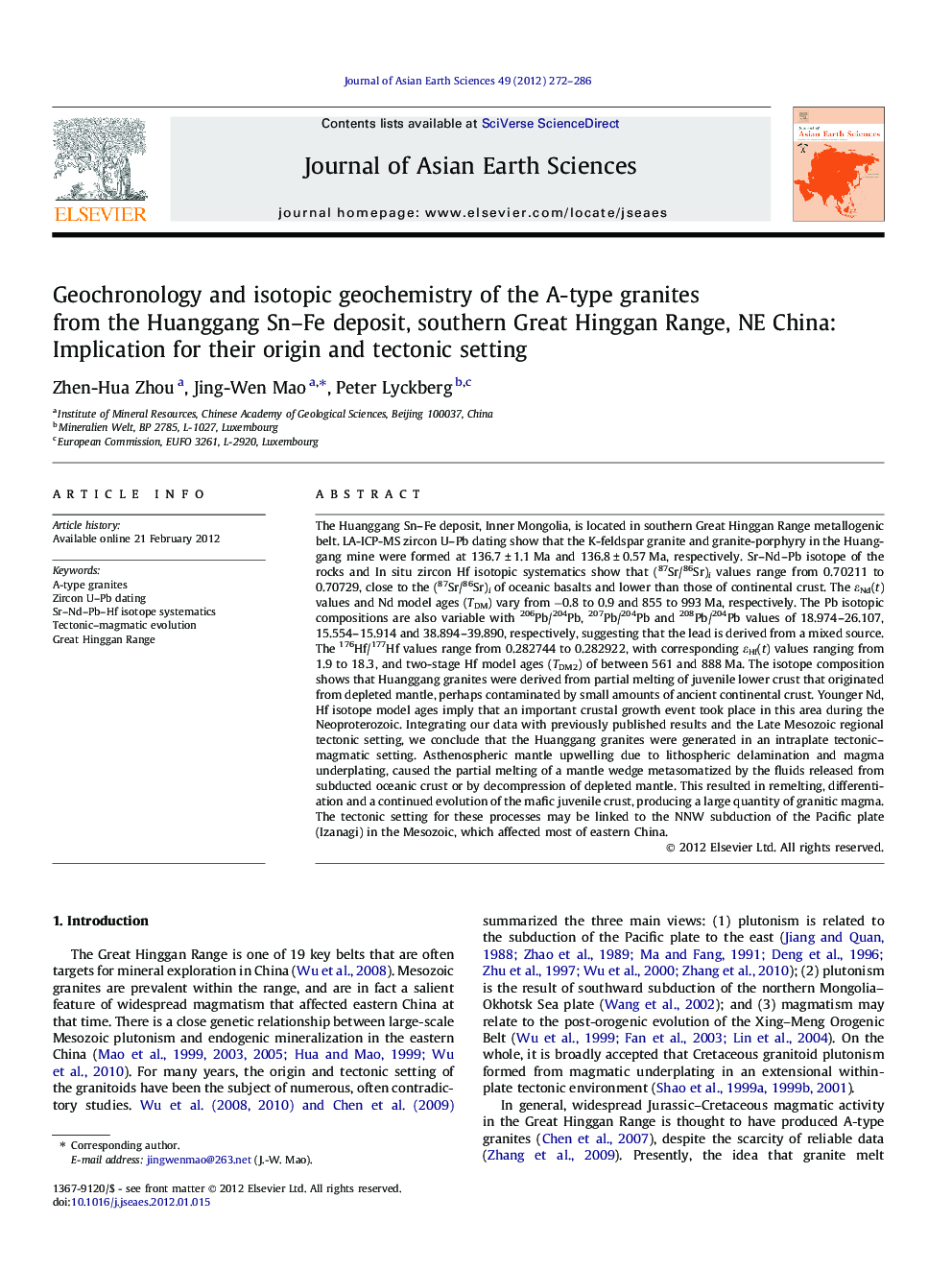| کد مقاله | کد نشریه | سال انتشار | مقاله انگلیسی | نسخه تمام متن |
|---|---|---|---|---|
| 4731518 | 1640415 | 2012 | 15 صفحه PDF | دانلود رایگان |

The Huanggang Sn–Fe deposit, Inner Mongolia, is located in southern Great Hinggan Range metallogenic belt. LA-ICP-MS zircon U–Pb dating show that the K-feldspar granite and granite-porphyry in the Huanggang mine were formed at 136.7 ± 1.1 Ma and 136.8 ± 0.57 Ma, respectively. Sr–Nd–Pb isotope of the rocks and In situ zircon Hf isotopic systematics show that (87Sr/86Sr)i values range from 0.70211 to 0.70729, close to the (87Sr/86Sr)i of oceanic basalts and lower than those of continental crust. The εNd(t) values and Nd model ages (TDM) vary from −0.8 to 0.9 and 855 to 993 Ma, respectively. The Pb isotopic compositions are also variable with 206Pb/204Pb, 207Pb/204Pb and 208Pb/204Pb values of 18.974–26.107, 15.554–15.914 and 38.894–39.890, respectively, suggesting that the lead is derived from a mixed source. The 176Hf/177Hf values range from 0.282744 to 0.282922, with corresponding εHf(t) values ranging from 1.9 to 18.3, and two-stage Hf model ages (TDM2) of between 561 and 888 Ma. The isotope composition shows that Huanggang granites were derived from partial melting of juvenile lower crust that originated from depleted mantle, perhaps contaminated by small amounts of ancient continental crust. Younger Nd, Hf isotope model ages imply that an important crustal growth event took place in this area during the Neoproterozoic. Integrating our data with previously published results and the Late Mesozoic regional tectonic setting, we conclude that the Huanggang granites were generated in an intraplate tectonic–magmatic setting. Asthenospheric mantle upwelling due to lithospheric delamination and magma underplating, caused the partial melting of a mantle wedge metasomatized by the fluids released from subducted oceanic crust or by decompression of depleted mantle. This resulted in remelting, differentiation and a continued evolution of the mafic juvenile crust, producing a large quantity of granitic magma. The tectonic setting for these processes may be linked to the NNW subduction of the Pacific plate (Izanagi) in the Mesozoic, which affected most of eastern China.
Journal: Journal of Asian Earth Sciences - Volume 49, 30 April 2012, Pages 272–286